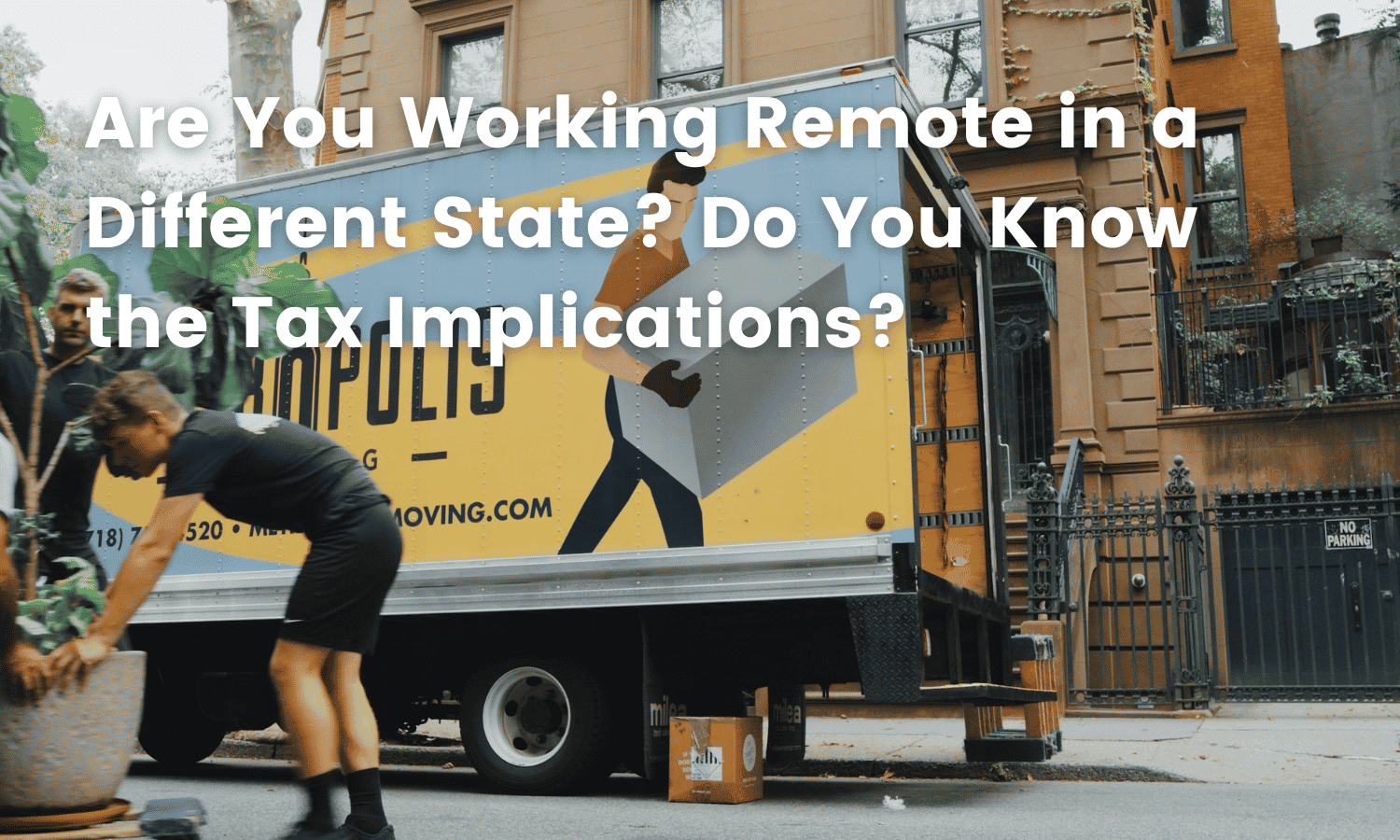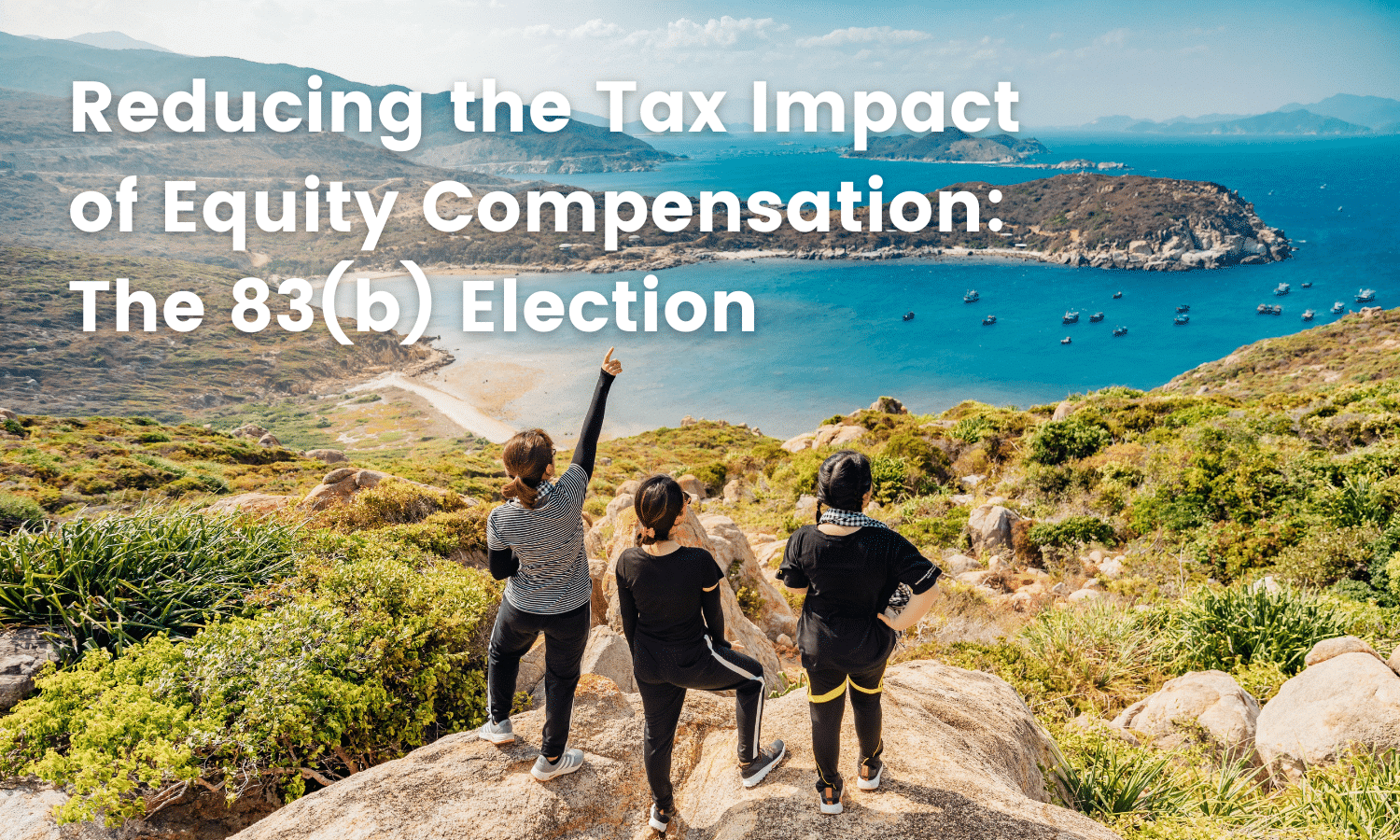Are You Working Remote in a Different State? Do You Know the Tax Implications?
It’s been two and a half years since the COVID-19 pandemic began, and most of the country is up and running: students have returned to classrooms, people are traveling for pleasure and business in record numbers, and spectators are back in the stands. However, one aspect of society has not fully returned to pre-pandemic normalcy: remote work. Shortly after the pandemic began, many employees moved from larger cities with higher rates of COVID to the suburbs or smaller towns in other states to lower their costs or purchase a larger home. However, many of these workers may not know the tax implications of working in a different state than their company’s headquarters.
How Many Workers are Doing This?
A few studies have generated different results about the number of people who are still telecommuting halfway through 2022. According to a Bureau of Labor Statistics (BLS) survey released in May, about 7.7% of employees reported working from home. The BLS reports that more women are working remotely for pandemic reasons. Among age groups, those 25 to 34 had a greater tendency to telecommute. That compares with an estimated 42% of workers working from home in June 2020, according to the Stanford Institute for Economic Policy Research.
Nevertheless, research has discovered that many employees desire to continue working from home. As of late April 2022, just 38% of Manhattan office workers were at the workplace on an average weekday. According to a recent study by the Partnership for New York City, only 8% were working in the office five days a week. The organization found that the share of fully remote office employees dropped from 54% in late October 2021 to 28% as of late April. The organization stated, “Remote work is here to stay, with 78% of employers indicating a hybrid office model will be their predominant post-pandemic policy, up from just 6% pre-pandemic.”
And Some People Took “Remote” Seriously
Beginning early in the pandemic, thousands of people in big cities such as San Francisco, San Jose, Boston, and New York City were stuck in small apartments and/or urban areas with the highest rates of COVID-19, moved to supposedly safer suburbs and countryside. The Washington Post ran an article with the headline “Great American Migration of 2020” in March 2020 and predicted it “might contain the sides of a wholesale shift in where and how Americans live.” The article explained that many people were leaving bigger cities and moving to summer homes in other states, such as Rehoboth Beach, Del., a resort town with only 1,500 permanent residents but with a summer weekend population that can expand to 25,000.
According to a survey by Politico, the urban areas that gained the most residents during the pandemic were Austin TX, Phoenix-Mesa-Chandler, Ariz., Raleigh-Cary, N.C., and Las Vegas, Nev. Urban centers that experienced net outflows included San Jose-Sunnyvale-Santa Clara, Calif., San Francisco-Oakland-Berkely, Calif., New York, N.Y., and Newark -Jersey City, N.J.
How Does This Impact Your Taxes?
Learning your state’s tax rules is crucial because each state has different laws about reporting income earned by residents, even those who do not reside in the state year-round. You may not have to pay more in taxes overall if your employer is located in another state because most states, but not all, provide a tax credit in these circumstances to avoid double taxation.
Depending on the state, however, you may have to pay double withholding taxes or file two state tax returns if you are working in a different state during the year than where your company is based, or what is known as a change in tax residence. For example, some states permit nonresidents to work there for more than 30 days without a tax withholding requirement, i.e., Arizona and Hawaii allow you reside there for up to 60 days before the withholding kicks in.
Other states are not as permissive. Twenty-three states mandate that you must begin paying the withholding tax on day one when you switch your tax residence. Others have laws with a wage-based tax threshold, and nine states do not collect income taxes.
Another important consideration, a few neighboring states have reciprocal agreements. If the state where you reside and work has this arrangement with the one where your company is based, you won’t owe taxes in both jurisdictions. For instance, if you live in Maryland but work for a Washington, D.C.-based firm, taxes will only be withheld from your paycheck for Maryland.
That is not all, unfortunately. Five states—Connecticut, Delaware, Nebraska, New York, and Pennsylvania—have a “convenience of employer” test for remote workers. The convenience test means you may have to pay taxes to two states. These states may impose [levy, or collect] a withholding tax on wages earned while working for an employer based in that state, even if you work in another state. There is only one exception: If your employer requires you to work out of state for its convenience, such as requiring you to work at a satellite branch for a period.
Another rule to remember: If you worked remotely in a state for more than 183 days in a year, you may be considered a resident for tax purposes and must file tax returns in two states.
The state of Connecticut, for one, did not wait for telecommuters to report their change of tax residence. A CPA Journal article explained that tax authorities in Connecticut were aware that many residents of New York state spent more than 183 days in their state in 2020. The authorities targeted property owners in Connecticut who did not file Connecticut resident tax returns for that year. As a result, several of these taxpayers received a letter from the Connecticut Department of Revenue Services reminding them of how Connecticut applies its 183-day rule.
What is Your Employer’s Responsibility?
These tax withholding rules are complicated, but your employer has an incentive to help pay your taxes properly and ensure that your taxes are withheld correctly with each paycheck. That’s because a state can penalize the employer if they don’t properly withhold remote workers’ taxes.
As a result, companies must take steps to know where their employees are working, which was quite complicated during the pandemic (and continues to be). For example, employees moved quite far from their original residence, such as Manhattan residents who moved to Florida and California workers who went to Nevada.
The Bottom Line
The movement of workers during the pandemic to live and work in other states has created many residency-related tax questions and issues for companies and employees. Tax preparers and accountants must also stay informed about states’ latest income tax laws concerning tax residences when preparing tax returns for remote workers.
Because state tax rules change frequently, companies must know where their employees are working and the corresponding states’ rules for tax withholding to avoid fines. Remote employees must also study these rules about tax withholding and filing annual tax where they live if they plan to live there for more than 183 days in a year.























